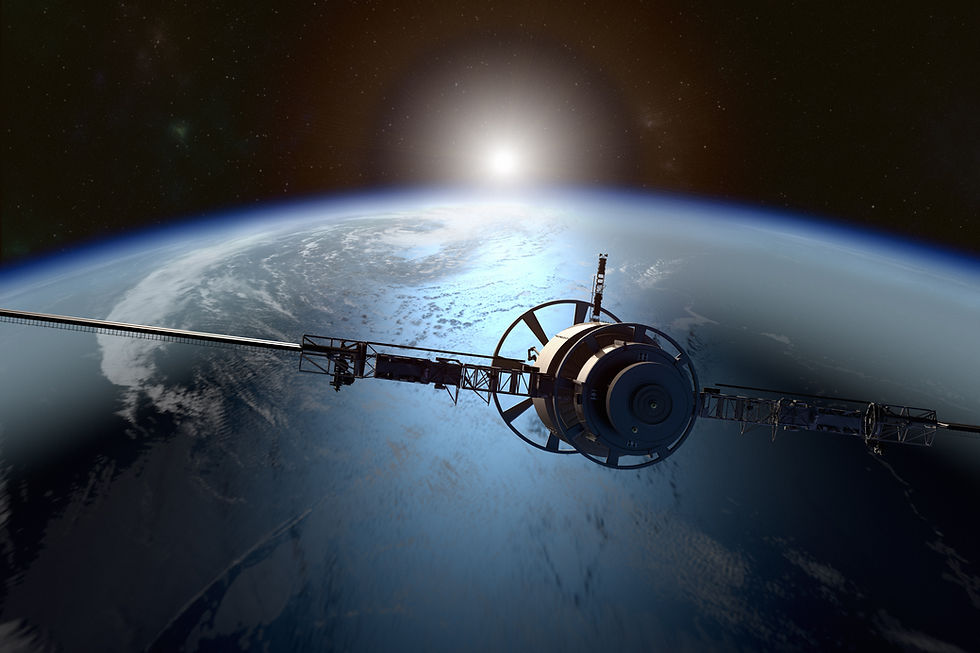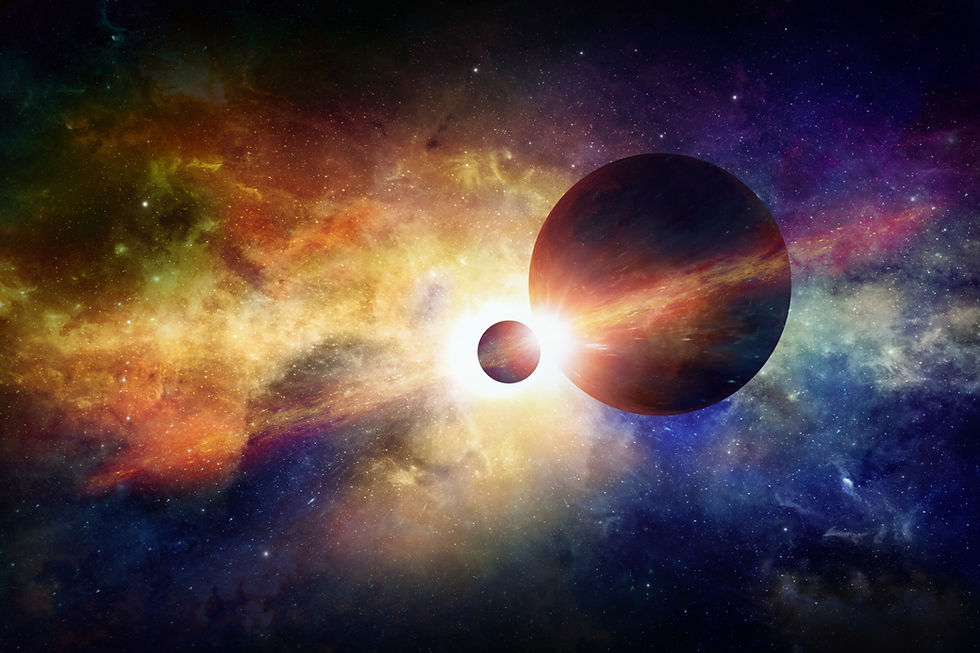Uranus: Secrets of a Sideways Spinning World
- Riyam Ojaimi

- Nov 29, 2024
- 4 min read
Nestled in the distant reaches of the solar system lies Uranus, an enigmatic world that continues to captivate astronomers and planetary scientists. This ice giant, the seventh planet from the Sun, is a study in contrasts: serene in appearance yet deeply complex in structure and dynamics. From its history and formation to its unique atmosphere and moons, Uranus offers a glimpse into the intricate workings of the outer solar system and the processes that shaped it billions of years ago.
The Discovery and Observation of Uranus
Uranus was discovered on March 13, 1781, by British astronomer Sir William Herschel. Using a homemade telescope, Herschel initially thought he had identified a comet. Over time, the object's nearly circular orbit confirmed it as a planet - the first discovered in the modern era and the first beyond Saturn visible only with a telescope.

The discovery of Uranus expanded the known solar system for the first time since antiquity, marking a turning point in astronomy. However, despite its historical significance, Uranus remains one of the least explored planets. Voyager 2’s brief flyby in 1986 provided most of our detailed observations, offering invaluable but incomplete data. No dedicated orbiter has yet been sent to this remote ice giant.
The Formation of Uranus
Like the rest of the solar system, Uranus formed about 4.5 billion years ago from the primordial solar nebula - a swirling disk of gas and dust. Classified as an ice giant, Uranus differs fundamentally from the gas giants Jupiter and Saturn. While hydrogen and helium dominate its atmosphere, the planet's interior contains a higher concentration of "ices," which in planetary science refer to compounds like water, ammonia, and methane that condense at low temperatures.
The structure of Uranus reflects this icy composition:
Core: A small, dense core of silicate and metal-rich material, thought to be similar in composition to rocky planets.
Mantle: A vast, icy layer of water, ammonia, and methane, often described as a "supercritical fluid" due to the extreme pressures and temperatures.
Atmosphere: A gaseous outer envelope rich in hydrogen, helium, and methane.
This layered structure likely formed through accretion in the cold outer regions of the early solar system. Gravitational interactions with other protoplanets may have influenced Uranus's position and characteristics.

A Planet Turned on Its Side
One of Uranus’s defining features is its extreme axial tilt of 98 degrees. Unlike other planets that spin relatively upright, Uranus rotates on its side, with its poles lying almost in its orbital plane.
This unusual tilt is widely attributed to a catastrophic collision with an Earth-sized object during its early history. The aftermath of this event reshaped the planet, possibly influencing its internal heat distribution and atmospheric dynamics.
The tilt results in some of the most extreme seasonal variations in the solar system. As Uranus completes its 84-year orbit around the Sun, each pole experiences 21 years of constant daylight, followed by 21 years of darkness. These prolonged seasons have significant effects on atmospheric circulation and cloud formation, making Uranus an intriguing case study for planetary meteorology.
The Coldest Planet
Uranus holds the distinction of being the coldest planet in the solar system, with recorded temperatures as low as -224°C (-371°F). This makes it colder than Neptune, despite being closer to the Sun.
The planet’s atmosphere consists primarily of hydrogen (83%) and helium (15%), with methane making up about 2%. It is the methane that absorbs red wavelengths of sunlight, giving Uranus its characteristic blue-green colour. Beneath this seemingly tranquil exterior lies a world of intense dynamics:
Winds: Uranus’s upper atmosphere hosts winds that reach speeds of 900 km/h (560 mph), rivaling the fastest winds on Neptune.
Cloud Layers: Observations suggest the presence of methane clouds, with deeper, less visible clouds of water-ammonia mixtures.
Unlike Jupiter and Saturn, Uranus emits almost no internal heat, leaving scientists puzzled as to why it radiates so little energy. This lack of heat could result from its hypothesised giant collision, which may have disrupted its ability to retain internal warmth.

A System of Rings and Moons
Uranus is surrounded by a faint system of rings and a diverse array of 27 moons, forming a mini-system within the planet's gravitational influence.
Rings: First discovered in 1977, Uranus’s rings are dark and narrow, composed primarily of icy particles mixed with organic material. They lack the brightness of Saturn’s rings but offer clues about the planet’s dynamic history and the forces shaping its environment.
Moons: Uranus’s moons are named after characters from Shakespearean plays and Alexander Pope’s works. The largest include:
Titania: The biggest of Uranus’s moons, featuring vast icy plains and tectonic features.
Miranda: Perhaps the most intriguing, with a patchwork of cliffs, craters, and ridges hinting at past geological upheaval.
Oberon and Ariel: Both display evidence of icy surfaces marked by ancient impacts.
These moons interact gravitationally with Uranus’s rings, maintaining their structure and occasionally reshaping the planet's near-space environment.
Despite the data collected by Voyager 2 and Earth-based telescopes, Uranus remains a mystery. Key questions include:
Why is its internal heat so faint compared to other planets?
What causes its magnetosphere to be so irregular, tilted by 59 degrees from its rotational axis?
Could subsurface oceans exist beneath the icy crusts of its moons, potentially harboring life?
Proposed missions to Uranus aim to investigate these questions, with plans for orbiters and probes that could spend years studying the planet and its system. These missions would not only deepen our understanding of Uranus but also provide insights into ice giants in general - a class of planets believed to be common in other solar systems.
Yours truly,
Riyam Ojaimi




.png)
Comments